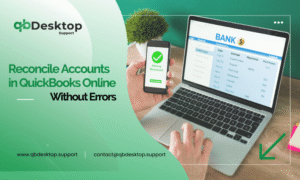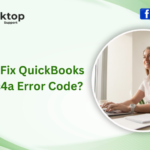QuickBooks Desktop is a powerful tool for managing finances, particularly when it comes to handling bills and payments efficiently. Whether you’re a small business owner, accountant, or bookkeeper, understanding how to enter and pay bills in QuickBooks Desktop is essential for maintaining accurate records and optimizing your financial workflow. In this comprehensive guide, we’ll walk you through the process step-by-step, ensuring you have the knowledge and confidence to effectively manage your bills within QB Desktop.
Getting Started with Bills in QuickBooks Desktop
To begin, ensure that you have QuickBooks Desktop installed on your computer and that you’ve set up your company file. Once you’re logged in, follow these steps to access the bills feature:
- Open QuickBooks Desktop and navigate to the “Vendors” menu.
- Select “Enter Bills” from the drop-down menu.
- You’ll be prompted to choose the vendor for whom you’re entering the bill. Select the appropriate vendor from the list or add a new vendor if necessary.
- Enter the relevant details of the bill, including the amount owed, due date, and any applicable account information.
- Save the bill once you’ve entered all the necessary information.
Managing Bills in QuickBooks Desktop
Once you’ve entered bills into QuickBooks Desktop, you’ll need to manage them effectively to ensure timely payment and accurate record-keeping. Here are some key tasks to help you stay on top of your bills:
- Reviewing Bills: Regularly review the bills entered into QuickBooks Desktop to ensure accuracy and completeness. Verify that the amounts, due dates, and vendor information are correct.
- Tracking Due Dates: Use QuickBooks Desktop’s built-in tools to track the due dates of your bills. You can set up reminders to alert you when bills are approaching their due dates, helping you avoid late payments and potential fees.
- Assigning Expenses: Categorize bills in QuickBooks Desktop by assigning them to the appropriate expense accounts. This ensures that your financial reports accurately reflect your business’s spending and expenses.
- Attaching Documents: QuickBooks Desktop allows you to attach documents, such as receipts or invoices, to your bills for easy reference. This can be particularly useful for maintaining organized records and resolving any discrepancies that may arise.
- Setting Payment Terms: Establish clear payment terms with your vendors and record them in QuickBooks Desktop. This helps streamline the payment process and ensures that you’re meeting your financial obligations in a timely manner.
Must Read:- How To Setup Inventory In QuickBooks Desktop?
Paying Bills in QuickBooks Desktop
Once you’re ready to pay your bills, QuickBooks Desktop offers several convenient options for processing payments. Here’s how to pay bills using QuickBooks Desktop:
- Navigate to the “Vendors” menu and select “Pay Bills.”
- QuickBooks Desktop will display a list of outstanding bills. Review the list to ensure accuracy and select the bills you wish to pay.
- Choose your preferred payment method, such as a check or electronic transfer, and enter the necessary payment details.
- Review the payment information one last time to ensure accuracy, then click “Pay Selected Bills” to process the payments.
- QuickBooks Desktop will record the payments and update your accounts accordingly. You can print checks directly from QuickBooks Desktop or send electronic payments, depending on your preferences.
Advanced Tips and Best Practices
To further optimize your bill management process in QuickBooks Desktop, consider implementing the following advanced tips and best practices:
- Utilize Online Banking: QuickBooks Desktop offers integration with online banking platforms, allowing you to download transactions directly into your account. This can save time and reduce errors when reconciling accounts and processing payments.
- Schedule Recurring Bills: For bills that occur regularly, such as rent or utilities, use QuickBooks Desktop’s recurring bill feature to automate the entry and payment process. This ensures that these bills are consistently accounted for and paid on time.
- Customize Payment Terms: Tailor payment terms to suit your business’s needs by customizing them in QuickBooks Desktop. You can specify different terms for each vendor, ensuring flexibility and consistency in your bill management practices.
- Reconcile Accounts Regularly: Reconcile your accounts in QuickBooks Desktop on a regular basis to ensure that your records accurately reflect your financial transactions. This helps identify any discrepancies or errors that may require correction.
Conclusion
Mastering the process of entering and paying bills in QuickBooks Desktop is essential for maintaining accurate financial records and optimizing your business’s financial workflow. By following the steps outlined in this guide and implementing best practices, you can streamline your bill management process, reduce errors, and ensure timely payments. Whether you’re a small business owner, accountant, or bookkeeper, QuickBooks Desktop provides the tools and resources you need to effectively manage your bills and keep your finances in order.
For further assistance or support with QuickBooks Desktop, don’t hesitate to contact our dedicated helpline at +1-855-838-5977. Our team of experts is standing by to help you get the most out of your QuickBooks experience.
Frequently Asked Questions
To edit a bill, navigate to the “Vendors” menu, select “Enter Bills,” locate the bill you wish to edit, make the necessary changes, and save the updated bill. To delete a bill, follow the same steps, but select “Delete Bill” instead of saving the changes.
Yes, QuickBooks Desktop allows you to schedule payments for bills in advance. When paying bills, simply select the bills you wish to pay and specify the desired payment date. QuickBooks Desktop will then process the payments on the scheduled date.
To reconcile payments made through QuickBooks Desktop with your bank statements, navigate to the “Banking” menu and select “Reconcile.” Follow the prompts to match the payments recorded in QuickBooks Desktop with the corresponding transactions on your bank statement.
QuickBooks Desktop does not offer built-in automatic bill payment functionality. However, you can use online banking integration to set up automatic payments through your bank’s website or directly from your bank account.
If you make bill payments outside of QuickBooks Desktop, you can manually record these payments in the software. Navigate to the “Vendors” menu, select “Pay Bills,” and choose the option to “Record a Bill Payment.” Enter the payment details to update your records accordingly.
Yes, QB Desktop allows you to print checks directly from the software to pay bills. When processing bill payments, select the option to print checks, and follow the prompts to customize and print the checks.
QuickBooks Desktop provides tools for tracking bills that are due in the future. You can use the “Enter Bills” feature to record future bills and set reminders to alert you when these bills become due.
QuickBooks Desktop does not impose a limit on the number of bills you can enter and pay. You can enter and pay bills as needed to manage your business’s finances effectively.
Yes, QuickBooks Desktop offers customization options for the bill payment process. You can customize payment terms, invoice templates, and other settings to align with your business’s specific needs and preferences.
If you encounter errors or issues when entering or paying bills in QuickBooks Desktop, you can reach out to QuickBooks Desktop support for assistance. Additionally, our dedicated helpline at +1-855-838-5977 is available to provide expert support and guidance.








